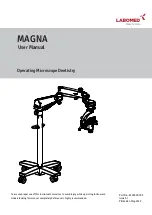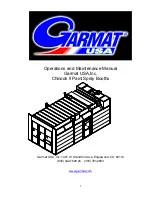
CONTROLLED COPY
Centre for Biological Engineering
Standard Operating Procedure
SOP194
Title: Use and maintenance of Leica RM2125 RTS rotary microtome.
Location:
H27
Version 001
Effective Date: 24.05.2021
Review 24.05.2023
Written by: Sotiria Toumpaniari
Reviewed by:
Approved by: C.Kavanagh
Page 7 of 11
5.3.6.3.
Trimming the specimen by setting a large section thickness
1. Set a correspondingly large se
ction thickness (e.g. 50 μm) using the section thickness setting knob
(17) at the front of the microtome on the right.
The current setting is displayed in the section thickness window (16).
2. Trim the specimen by rotating the handwheel (15) until the desired specimen plane is reached.
5.3.6.4.
Trimming with the mechanical trimming function
The Leica RM2125 RTS is equipped with a mechanical trimming function
that is activated via the trimming lever (
20
).
The trimming lever has 3 click stops:
0 μm, 10 μm, and 50 μm.
The points (
23
) mark the two trimming stages:
= 10μm
= 50 μm
1.
To activate the trimming function, press the lever downwards into
the desired position and keep it pressed down.
2.
With each
rotation of the handwheel, a feed motion of 10 μm or 50
μm takes place.
3.
After you let go of the lever, it springs back to its original position
(zero position). The trimming function is thereby deactivated.
Note:
The section thickness that has been set is not added to the selected trim-
ming value.
If the section thickness that has been set is greater than the selected trimming
value, the section thickness is fed.
4.
Bring the specimen closer to the knife by rotating the coarse feed
wheel.
5.
Select the desired trimming stage.
6.
Trim the specimen by rotating the handwheel (21) until the
desired specimen plane is reached.
7.
Release the trimming lever (22).
5.3.7. Sectioning
Note:
Always rotate the handwheel at a uniform speed. The rotation speed of the handwheel must be
adapted to suit the hardness of the specimen.
For harder specimens, use a slower speed.





























